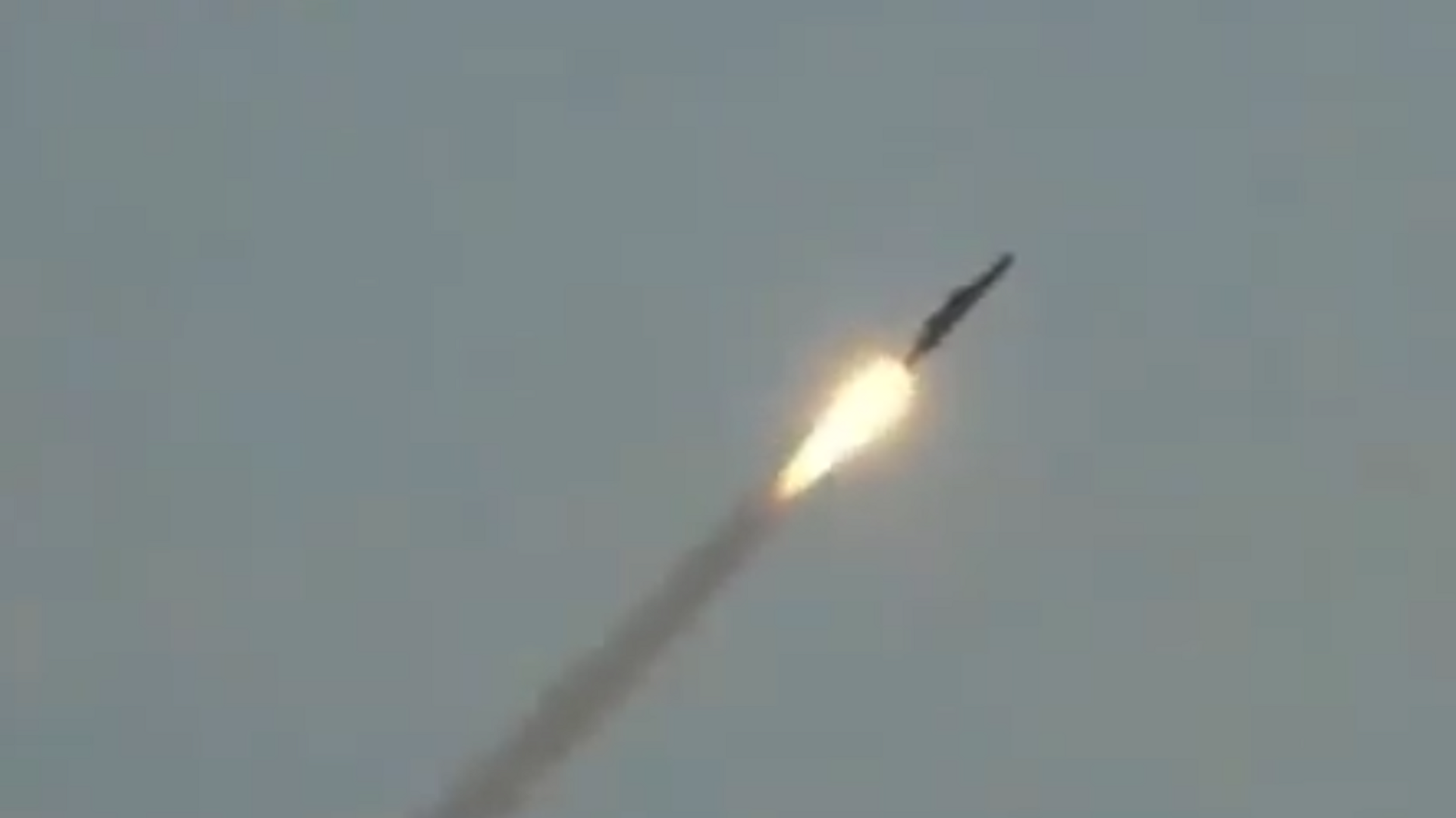https://en.sputniknews.africa/20230606/iran-unveils-hypersonic-missile-hailing-deterrent-boost-1059739841.html
Iran Unveils Hypersonic Missile Hailing Deterrent Boost
Iran Unveils Hypersonic Missile Hailing Deterrent Boost
Sputnik Africa
Iran's Revolutionary Guards unveiled an intermediate range ballistic missile Tuesday capable of travelling at hypersonic speeds of up to 15 times the speed of... 06.06.2023, Sputnik Africa
2023-06-06T11:52+0200
2023-06-06T11:52+0200
2023-08-03T10:49+0200
iran
democratic people's republic of korea (dprk, north korea)
rafael grossi
international atomic energy agency
russia
kinzhal hypersonic missiles
international
https://cdn1.img.sputniknews.africa/img/07e7/06/06/1059740254_0:0:1501:844_1920x0_80_0_0_7d94dbebfc82db100476b0ab56d4d013.png
President Ebrahim Raisi hailed the new missile's hypersonic capability, saying it would boost Iran's "power of deterrence" and "bring peace and stability to the countries of the region". The official IRNA news agency published photographs of the ceremony in a closed area it did not identify. Several top military commanders were present, including Guards chief General Hossein Salami. Like slower ballistic missiles, hypersonic missiles can be equipped with nuclear warheads and Iran's announcement it was producing one in November prompted International Atomic Energy Agency chief Rafael Grossi to express concern. But Grossi added he did not see the new missile "having any influence" on negotiations with Iran over its nuclear activities. Talks between Tehran and major powers on reviving a 2015 nuclear deal that was left in tatters when Washington unilaterally abandoned it in 2018 and imposed renewed sanctions are currently stalled. Iran has since suspended its implementation of the strict limits it agreed to on its nuclear activities and restricted IAEA monitoring.Unlike conventional ballistic missiles, hypersonic ones fly on a trajectory low in the atmosphere, enabling them to reach their targets more quickly and with less chance of being intercepted by modern air defences. When the programme was announced last year, Guards aerospace chief General Amirali Hajizadeh said the system was developed to "counter air defence shields", adding that he believed it would take decades before a system capable of intercepting it is developed. Iran's arch foe Israel, which is widely believe to have its own undeclared nuclear arsenal, has multiple air defence shields for countering subsonic and supersonic missiles. North Korea's test of a hypersonic missile last year sparked concerns about the race to acquire the technology, which is currently led by Russia, followed by China and the United States. Since March last year, Russia's Kinzhal hypersonic missile has been used multiple times in the special military operation in Ukraine.
https://en.sputniknews.africa/20230419/iranian-military-designs-submarines-hunting-drone-navy-commander-says-1058695082.html
iran
democratic people's republic of korea (dprk, north korea)
russia
Sputnik Africa
feedback@sputniknews.com
+74956456601
MIA „Rossiya Segodnya“
2023
Agence France Presse (AFP)
Agence France Presse (AFP)
News
en_EN
Sputnik Africa
feedback@sputniknews.com
+74956456601
MIA „Rossiya Segodnya“
Sputnik Africa
feedback@sputniknews.com
+74956456601
MIA „Rossiya Segodnya“
Agence France Presse (AFP)
iran, democratic people's republic of korea (dprk, north korea), rafael grossi, international atomic energy agency, russia, kinzhal hypersonic missiles, international
iran, democratic people's republic of korea (dprk, north korea), rafael grossi, international atomic energy agency, russia, kinzhal hypersonic missiles, international
Iran Unveils Hypersonic Missile Hailing Deterrent Boost
11:52 06.06.2023 (Updated: 10:49 03.08.2023) Agence France Presse (AFP)
Iran's Revolutionary Guards unveiled an intermediate range ballistic missile Tuesday capable of travelling at hypersonic speeds of up to 15 times the speed of sound, state television reported.
President
Ebrahim Raisi hailed the new missile's hypersonic capability, saying it would boost Iran's "power of deterrence" and "bring peace and stability to the countries of the region".
The official IRNA news agency published photographs of the ceremony in a closed area it did not identify. Several top military commanders were present, including Guards chief General Hossein Salami.
"The range of the Fattah missile is 1,400 kilometres (870 miles) and its speed before hitting its target" is between 13 and 15 times the speed of sound, IRNA said.
Like slower ballistic missiles, hypersonic missiles can be equipped with nuclear warheads and Iran's announcement it was producing one in November prompted International Atomic Energy Agency chief Rafael Grossi to express concern.
But Grossi added he did not see the new missile "having any influence" on negotiations with Iran over its nuclear activities.
Talks between Tehran and major powers on reviving a 2015 nuclear deal that was left in tatters when Washington unilaterally abandoned it in 2018 and imposed renewed sanctions are currently stalled.
Iran has since suspended its implementation of the strict limits it agreed to on its nuclear activities and restricted IAEA monitoring.
Unlike conventional ballistic missiles, hypersonic ones fly on a trajectory low in the atmosphere, enabling them to reach their targets more quickly and with less chance of being intercepted by modern air defences.
When the programme was announced last year, Guards aerospace chief General Amirali Hajizadeh said the system was developed to "counter air defence shields", adding that he believed it would take decades before a system capable of intercepting it is developed.
Iran's arch foe Israel, which is widely believe to have its own undeclared nuclear arsenal, has multiple air defence shields for countering subsonic and supersonic missiles.
North Korea's test of a hypersonic missile last year sparked concerns about the race to acquire the technology, which is currently led by Russia, followed by China and the United States.
Since March last year, Russia's Kinzhal hypersonic missile has been used multiple times in the special military operation in Ukraine.


